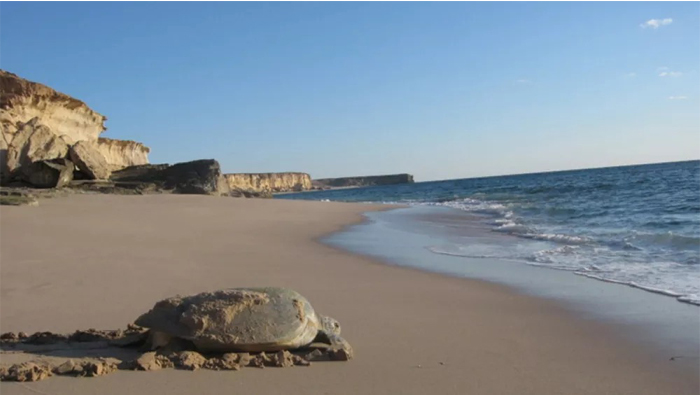
Muscat: A rising turtle population in Oman is good not just for tourism, but for the environment as well, says a top official at the Ras Al Jinz Turtle Reserve.
The reserve is home to the Sultanate’s largest colony of green turtles, which come to the beaches of the Sharqiyah Governorate to nest and lay their eggs every summer.
With the turtle season scheduled to begin this summer, Vijay Handa, the reserve’s general manager, says he expects more turtles than ever to nest on the beach this summer.
“We have been seeing a growth of some five to six per cent in the number of green turtles coming to Oman,” said Handa.
“This is very good for tourism, because it means a lot of people will come to Oman to see the turtles hatching. A lot of tourists actually land in Muscat and then directly go to Ras Al Jinz, because they want to see the turtles.”
“There are some six species of turtles that come to Oman to nest. The green turtles come only here to nest,” he added.
“Another species, called the black loggerhead turtles, comes to nest on Masirah island, where we have built another reserve. The turtle hatching and breeding season coincides with summer, so the longer the summer, the longer the hatching season.”
“Many people may think that it is too hot to come to Oman in the summer and see the turtles, but temperatures in the Sharqiyah region are 15 to 20 degrees cooler than in Muscat, so, it is the ideal time for people to visit,” explained Handa.
National tourism
The Raz Al Jinz reserve and its Masirah island establishment are both run by Omran, the Sultanate’s national tourism development organisation, which is under the aegis of the Ministry of Tourism. Omran has ensured that the turtles are provided the best environment to thrive in.
“We have no artificial light on the beach because turtles always move towards the brightest light source, which in nature’s case is the sun,” revealed Handa. “If we have artificial light on the beach, they will get distracted and won’t go towards their nesting grounds or back to the ocean once they have finished.”
“The best time to watch the turtles is either late at night, or early in the mornings. It is better in the mornings because then you get to see a beautiful sunrise,” he added.
“But we take care not to disturb the turtles. Our rangers are posted on the beach, and only once the turtles have begun laying their eggs, do we guide tourists towards them. If the turtles see people before that happens, they will get scared, but once they begin laying eggs, they will lay 200 or 300 or even more at a time.”
Although more than a thousand baby turtles hatch during the breeding season, only a small number makes it back to the ocean.
“Turtles lay thousands of eggs during the breeding season because only three or four per cent of them survive,” said Handa.
“There are many natural predators that eat the baby turtles, but Oman’s policy on turtle conservation is to not interfere in the natural cycle. What we do is ask tourists—and we don’t take more than 25 tourists in one group—to not take the turtles home or accidentally step on them.”
Ali Muhammadi, founder of travel blog Oman Tripper and a licenced tourist guide, said those who come to see the turtles are very fortunate.
“Many tourists ask me for information on the turtles, and I tell them that this is a once-in-a-lifetime opportunity for them, because if you get to see the turtles hatch, you are very lucky,” he told Times of Oman. “A lot of them travel to the Sharqiyah region to see the turtles, take the roads that go to the interior so they can see that part of Oman, and then come back to Muscat.”
“It is very good for Oman because it makes the nation a destination for eco-tourism,” added Muhammadi.